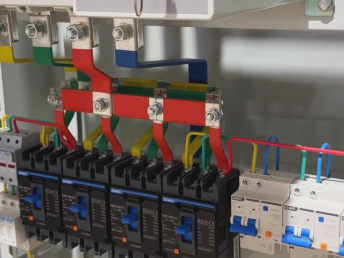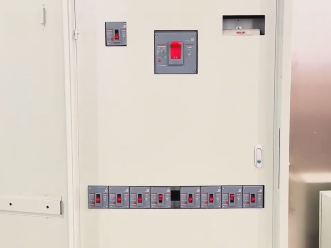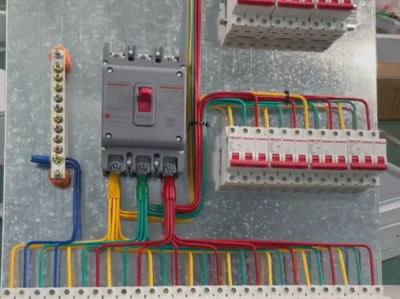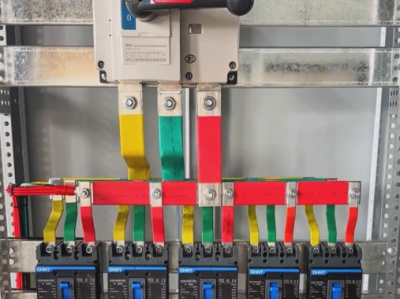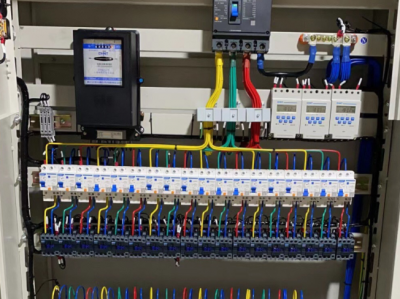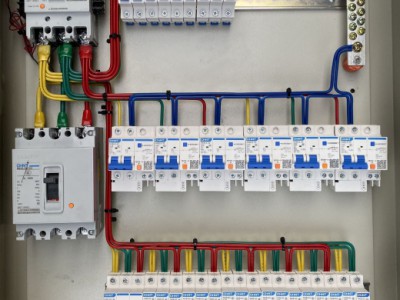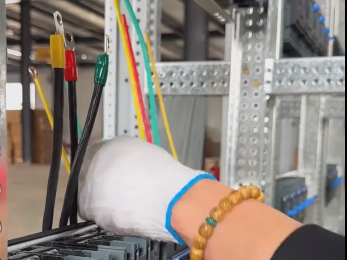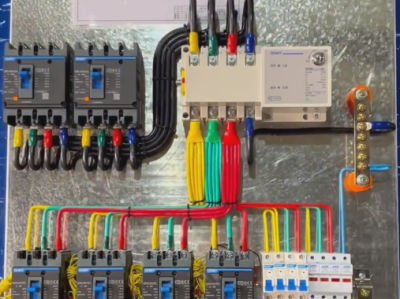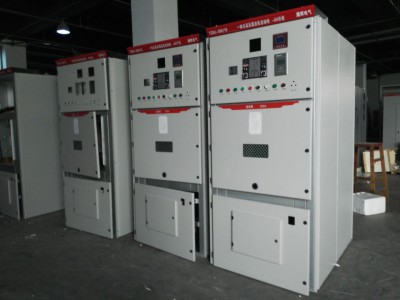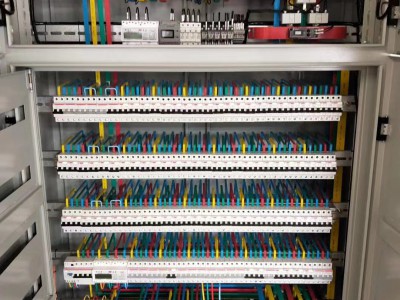drawer-type switchgear
Product description
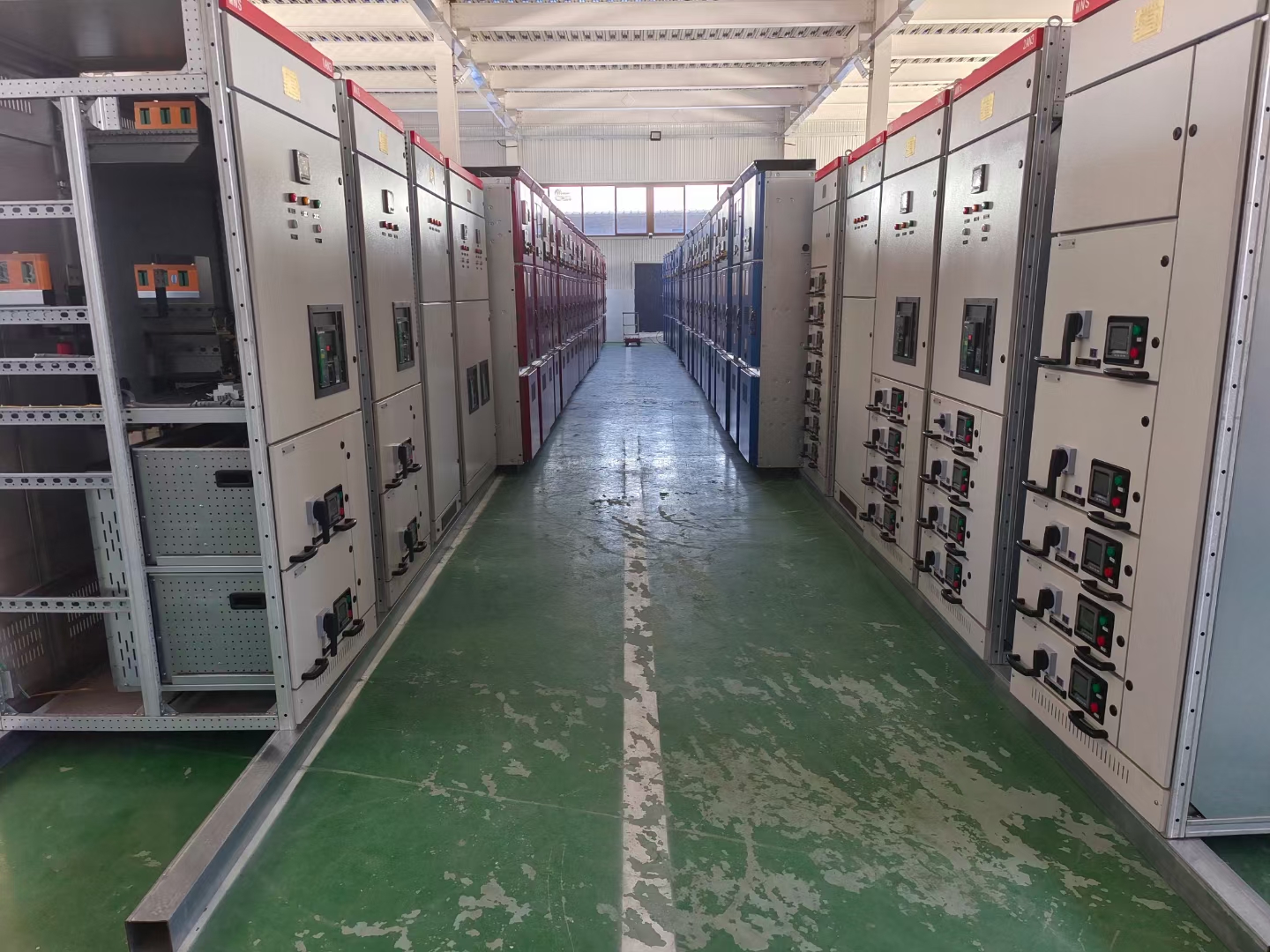 I. Definition and Functions**
I. Definition and Functions**
1. **Definition**
- The drawer-type switchgear is a kind of switchgear in which various electrical components are installed in drawer units. These drawer units can be easily inserted into and withdrawn from the cabinet body of the switchgear to achieve electrical connection or disconnection. It is an electrical equipment widely used in low-voltage power distribution systems and can be used for centralized control and protection of circuits.
2. **Functions**
- **Circuit protection**
- The drawer-type switchgear is equipped with various protection devices inside, such as circuit breakers and fuses. Circuit breakers can protect against faults such as overload and short circuit in the circuit. When the current in the circuit exceeds the rated value, the circuit breaker will trip automatically and cut off the circuit to prevent damage to electrical equipment and electrical fire hazards. Fuses cut off the current by melting their own melt when there is a serious overload or short circuit in the circuit, playing a protective role.
- For example, in the lighting circuit of a commercial building, if a certain branch circuit has a short circuit, the circuit breaker in the drawer-type switchgear corresponding to this branch circuit will act quickly to protect the entire lighting system from being affected.
- **Circuit control**
- It can conveniently control the on and off of the circuit. By operating the operating handle or control button on the drawer unit, the on and off operations of the circuit can be realized. This is very convenient for occasions that require frequent operation of the circuit, such as equipment start-stop control in industrial production.
- For example, on the automated production line of a factory, the power supply of each equipment can be conveniently controlled through the drawer-type switchgear to realize the sequential start and stop of the equipment.
- **Convenient for maintenance and repair**
- Due to the drawer structure, when an electrical component in a certain drawer unit fails, the drawer unit can be withdrawn alone for maintenance or replacement of electrical components without affecting the normal operation of other drawer units. This greatly improves maintenance efficiency and reduces power outage time.
- For example, in the power distribution system of a hospital, if a contactor in a certain drawer unit fails, the drawer can be quickly withdrawn for repair, and the power supply in other areas of the hospital can still be maintained normally.
**II. Structural Composition**
1. **Cabinet body**
- The cabinet body is the shell of the drawer-type switchgear and is usually made of metal materials such as cold-rolled steel plates. The cabinet body has certain strength and rigidity and can protect the internal electrical components from external mechanical impacts and environmental factors (such as dust, moisture, etc.). The protection level of the cabinet body varies according to different use environments. Common protection levels include IP30, IP40, etc.
2. **Drawer unit**
- This is the core part of the drawer-type switchgear. Each drawer unit has its own independent electrical circuit, and various electrical components such as circuit breakers, contactors, and thermal relays are installed inside. The front panel of the drawer unit usually has an operating handle, indicator lights, instruments, etc., which are convenient for operation and observation of the circuit state. The drawer unit is connected to the cabinet body through guide rails and can be easily inserted into and withdrawn from the cabinet body, and reliable electrical connection can be achieved when inserted into the cabinet body.
3. **Busbar system**
- The busbar system is the transmission channel of electric energy in the drawer-type switchgear. It distributes the electric energy input by the power supply to each drawer unit. The busbars are usually made of copper bars or aluminum bars and have good conductivity. When designing the busbar system, factors such as current capacity and heat dissipation should be considered to ensure safe and stable transmission of electric energy during normal operation.
4. **Incoming and outgoing connection parts**
- The incoming line part is used to introduce the external power supply into the switchgear, and the outgoing line part is used to output the electric energy in the switchgear to the load. The incoming and outgoing connection parts are usually connected by means of wiring terminals or cable connectors to ensure the reliability of electrical connections. When connecting, pay attention to the correctness and firmness of the wiring to prevent loosening, false connection and other phenomena to avoid safety hazards such as heating and arcing.
5. **Protection and monitoring devices**
- In addition to the protection devices such as circuit breakers and fuses mentioned earlier, the drawer-type switchgear may also be equipped with other protection and monitoring devices. For example, a leakage protection device can detect leakage in the circuit and cut off the circuit in time when the leakage current exceeds the set value to ensure personal safety; current transformers and voltage transformers can be used to measure the current and voltage in the circuit and transmit signals to monitoring instruments or control systems to realize real-time monitoring of the circuit operation state.
**III. Operation and Maintenance**
1. **Operation points**
- **Insertion and withdrawal operations of drawer units**
- When inserting a drawer unit, ensure that the guide rails of the drawer unit are aligned with the guide rails of the cabinet body. Slowly and smoothly insert the drawer unit into the cabinet body until a "click" sound is heard, indicating that the drawer unit has been correctly inserted and electrical connection is achieved. When withdrawing the drawer unit, first place the operating handle on the drawer unit in the "off" position, then press and hold the unlock button on the drawer unit, and then slowly withdraw the drawer unit.
- **On and off operations of the circuit**
- For drawer units that use circuit breakers to control the on and off of the circuit, the on and off of the circuit are realized by operating the operating handle of the circuit breaker. During operation, pay attention to observing the status indication of the circuit breaker to ensure correct operation. For some drawer units with control buttons, pressing the corresponding button can realize the on and off operation of the circuit.
2. **Maintenance requirements**
- **Regular inspections**
- Regularly inspect the drawer-type switchgear, including checking whether the cabinet body has damage, corrosion, etc.; checking whether the insertion and withdrawal of the drawer unit are smooth and whether the guide rails are deformed or worn; checking whether the connections of electrical components are firm and whether there are loosening or heating phenomena; checking whether the protection and monitoring devices are working normally, such as whether the tripping characteristics of circuit breakers are normal and whether the leakage protection device can detect leakage normally.
- **Cleaning work**
- Regularly clean the inside of the switchgear to remove dust, debris, etc. Because excessive dust accumulation may affect the heat dissipation of electrical components and reduce the insulation performance, thus causing failures. When cleaning, tools such as hair dryers and vacuum cleaners can be used, but pay attention to avoiding damage to electrical components.
- **Component replacement and maintenance**
- When damaged electrical components are found, such as circuit breaker failures and contactor contact wear, they should be replaced or repaired in time. When replacing components, products with the same specifications as the original components should be selected and operated according to the correct installation and debugging methods. For some complex component replacement and maintenance work, it is best to be carried out by professional electrical technicians.

